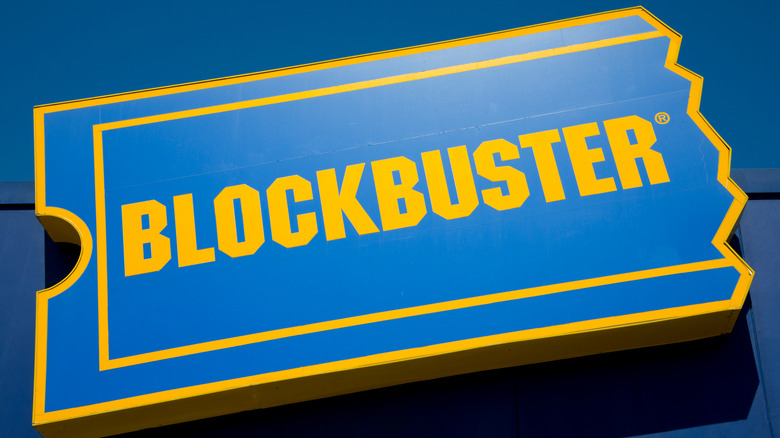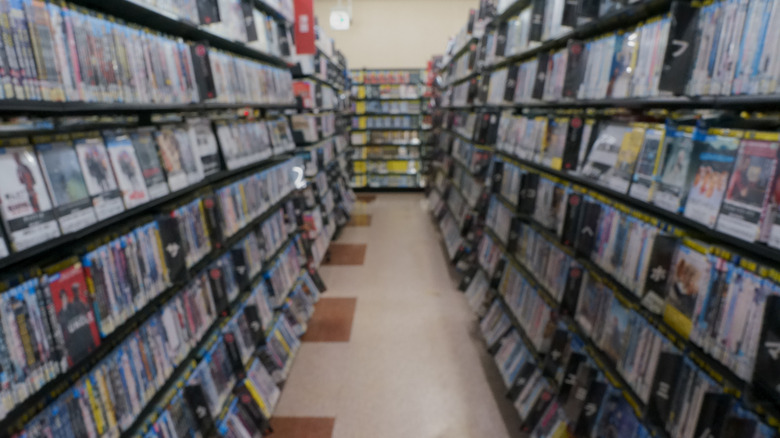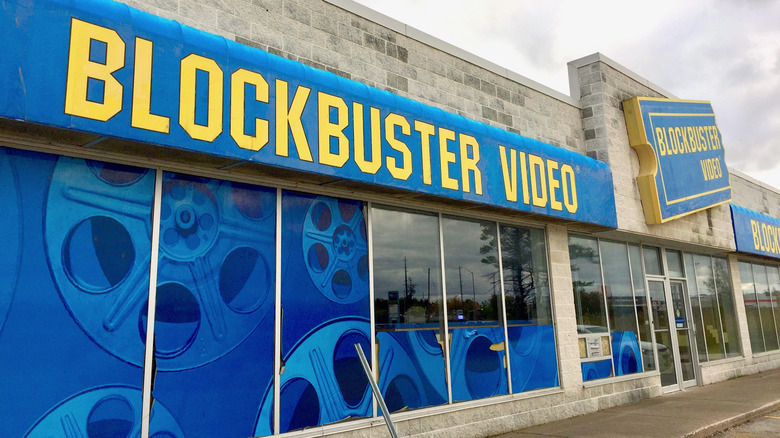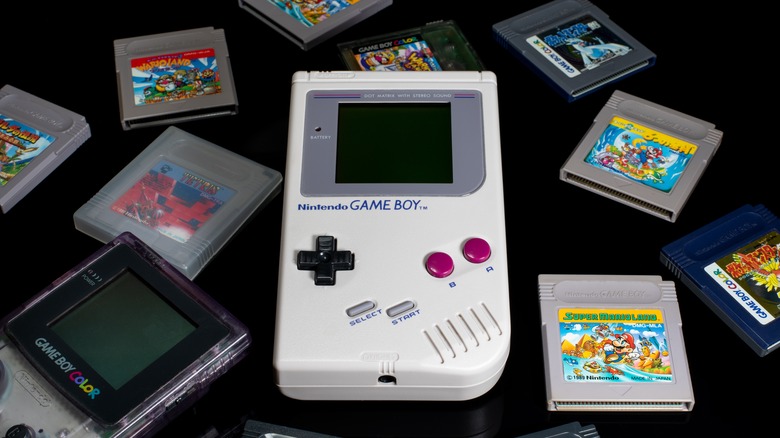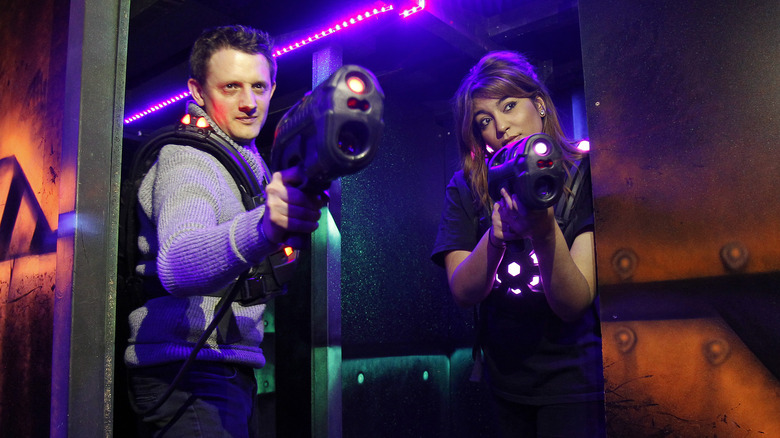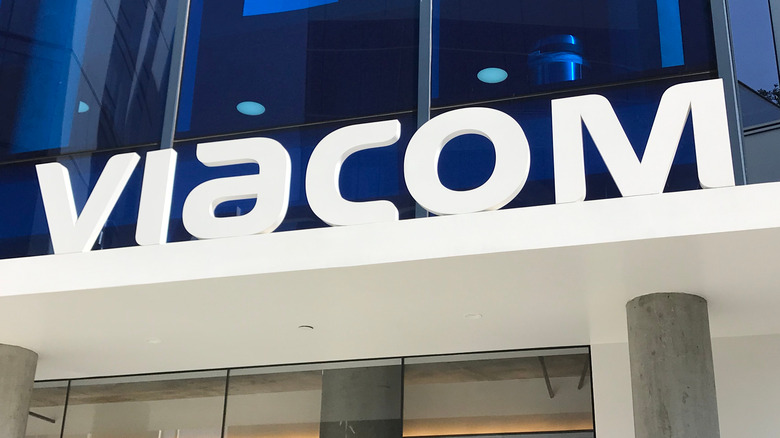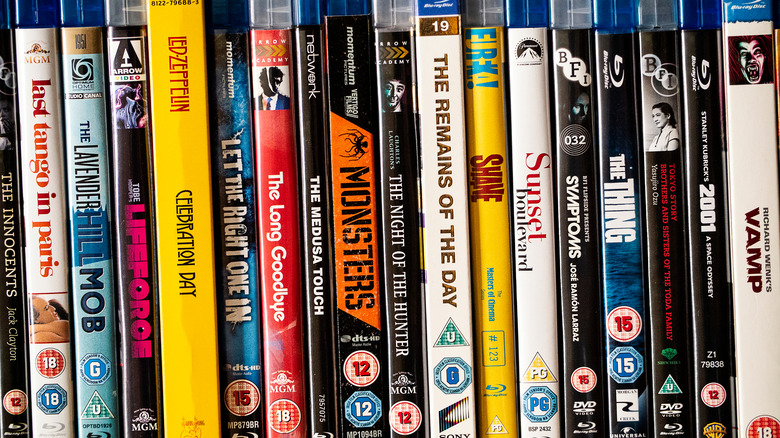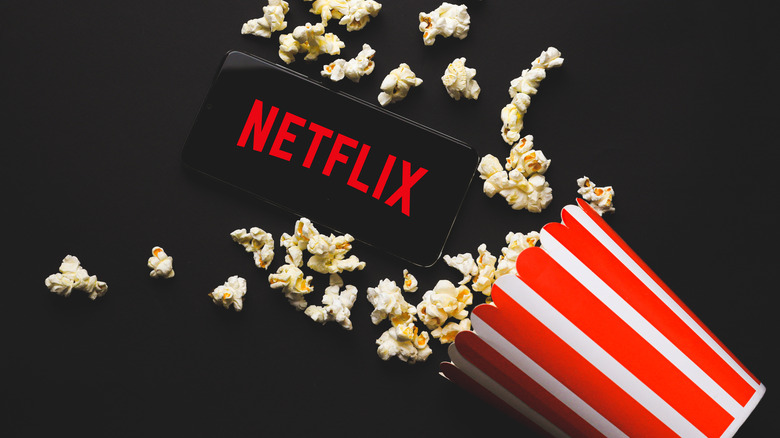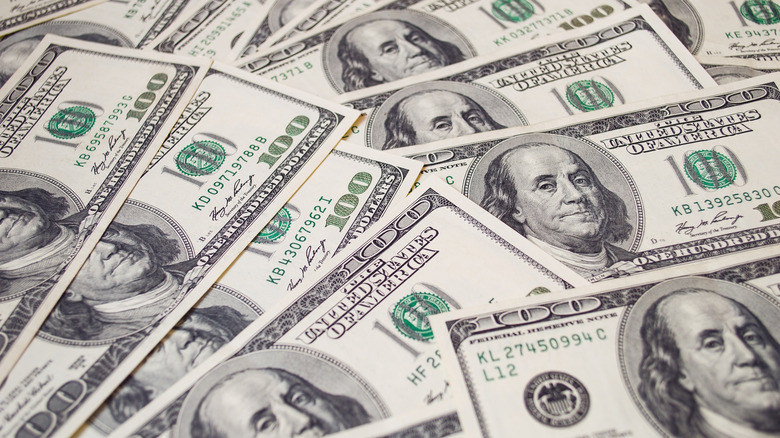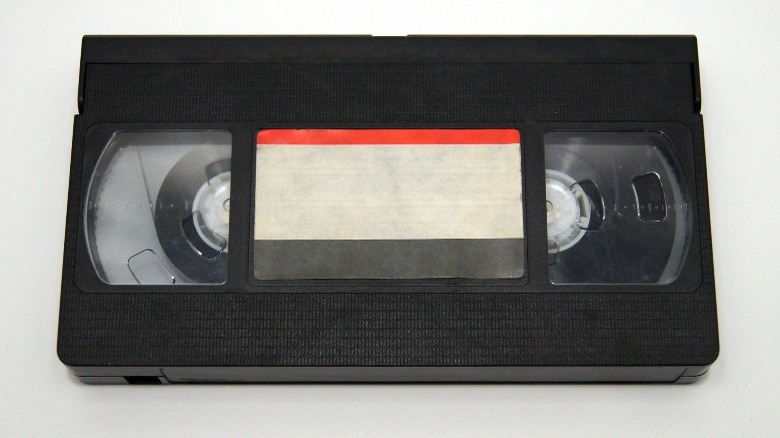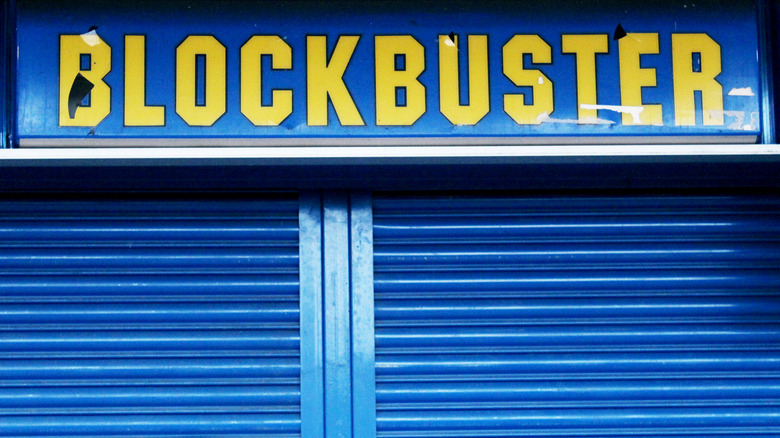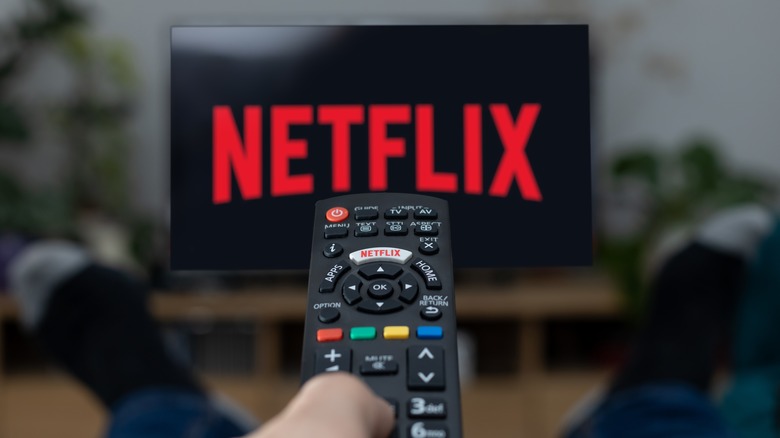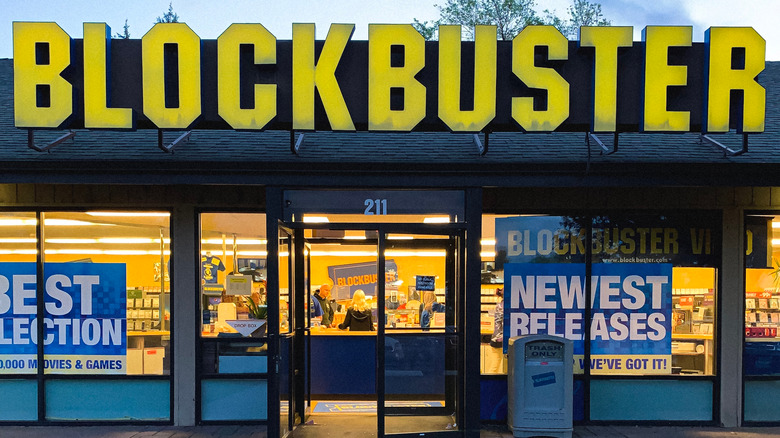The Sudden Rise And Fall Of Blockbuster
Remember when you actually had to drive somewhere and rent or buy tapes when the newest movies or latest TV show seasons hit home video? When you had to "be kind, rewind"? When you could make any night a Blockbuster night?
You couldn't have possibly lived through the '80s and '90s without searching the endless shelves of a Blockbuster Video. Back then, you couldn't just search Netflix for what you wanted to watch (though Netflix would be one of the reasons for Blockbuster's eventual demise). The only annoying thing might have been the late fees. If you hadn't gotten through the pile of videos you rented when your time was up, but just had to find out whether the dinosaurs went extinct again at the end of "Jurassic Park," you got burned. At least you didn't burn the popcorn.
What started out as one man's idea for a video store that would have thousands of titles — everything you could imagine and some you probably couldn't — and a faster checkout, blew up into a phenomenon. Nothing could really compete with Blockbuster until the advent of mail-in video rentals and then, streaming. Rewind to see what you might have missed.
Blockbuster did rentals differently
Video rentals hadn't been a thing for that long when David Cook opened the first Blockbuster in Dallas, Texas, in 1985. According to TechCrunch, there was no such thing until 1977. The first VCR, the Sony Betamax, had only been available to the masses since 1975 and would not start appearing in many households until 1983. Blockbuster entered the scene right when the rental business was on the edge of becoming mainstream.
The rental leviathan's founder started out as a software wizard who quickly realized that renting out the latest movies could become lucrative, per History. The "Wow" difference between Blockbuster and other rental stores was that it had a massive selection — some 8,000 tapes — and a fast computerized checkout that was then considered high-tech. Blockbuster added a few locations in 1987 but really took off when Cook sold part of it to Wayne Huizenga, who headed Waste Management (an actual garbage disposal company).
Huizenga took over entirely when Cook left. Not only were new Blockbusters appearing everywhere, but smaller video stores were being morphed into them, and over a thousand were doing business by the dawn of the '90s.
Huge investments made it a blockbuster hit
Blockbuster flourished under Wayne Huizenga and several other investors. Some of Huizenga's business methods were inspired by McDonald's founder Ray Kroc, as reported by The Hollywood Reporter in 1995.
According to the South Florida Sun Sentinel, Blockbuster soon had its own flag like McDonald's, and its own characters, including the Blockbuster Kids and their appropriately named dog Pause. Cook had previously done away with anything X-rated so he could get families in the door. Huizenga later made sure that the chains Blockbuster bought would not rent pornography out, especially those who had seen a significant part of their revenue come from such films. Not everyone agreed with these policies at the time, but as video industry analyst Derek Baine told the Sun Sentinel, "Any company that wants its stock bought by mutual funds and pension funds better not rent X-rated movies."
Huizenga was going for company-owned stores as opposed to the franchises his predecessor wanted to open. He and his partners bought out as many video rental stores as they possibly could, especially the most formidable competitors. Other video chains started to catch on in the early '90s, but by that time, Blockbuster was way ahead of them.
Blockbuster beat out Nintendo for game rentals
Blockbuster wanted in on video game rentals after it hit a boom. The only thing in its way was Nintendo. As covered by the Sun Sentinel in 1989 (via the Nintendo Times), Nintendo actually sued Blockbuster when Blockbuster started renting out games along with movies. Suddenly you could play "Legend of Zelda" or "Super Mario Bros." for a fraction of the price, but Blockbuster soon experienced a glitch.
Nintendo claimed that by copying its video game instructions, Blockbuster had violated copyright law, per the Sun Sentinel. Blockbuster would just photocopy a Nintendo manual if a renter lost it and charge the renter a fee. Nintendo didn't see the reproduced gameplay manuals as legit and accused Blockbuster of copyright infringement.
Further, because Nintendo refused to allow any other business to rent out their games, Blockbuster could only purchase them through other channels. As Nintendo spokesman Richard Lindner said at the time, "We've never expanded our distribution to include any rental store. Anyone carrying it [a Nintendo game] bought it through a retail store or some unauthorized means of distribution."
In another 1989 article, the Los Angeles Times reported that Blockbuster did ask managers at its locations to put an end to copying manuals, though Nintendo accused Blockbuster of doing nothing. The case went to court. Blockbuster was finally ordered to send each manager a warning letter directly from Nintendo.
It owned sci-fi playlands for adults and even bought Discovery Zone
Blockbuster Block Parties were what the Los Angeles Times called in 1995 "Disneyland on steroids." These mega-sized arcades had everything from laser tag, virtual reality games, and pinball machines to mammoth ball pits and a labyrinth of tubes known as the Power Grid — except everything was designed for adults and the locations were open late.
Blockbuster obviously had a reason to call Block Parties places "where grown-ups go to kid around." They were designed to look something like post-apocalyptic city streets, with traffic sound effects that joined a cacophony of video game pings and zaps over a thudding pulse of techno music. There was actually a VR maze called Virtua Alley in which you morphed into a robot fighting Godzilla-esque monsters. You didn't even need coins or tokens, because you could spend what you wanted on a "Fun Card" up front, insert it into a slot on each machine or attraction, and go wild. Anyone under 18 had to be accompanied by an adult.
As if that wasn't enough, Blockbuster also saw an opportunity in buying 20% of indoor kid haven Discovery Zone in 1993, per The New York Times.
Viacom merged with Blockbuster and created an entertainment monster
Viacom would eventually buy Blockbuster in 1994 for $8.4 billion. As reported by the Los Angeles Times, the motive was to join forces so that Viacom could prevent QVC Network and Paramount Pictures from merging, with Viacom's ultimate goal of grabbing Paramount for itself.
Not only was this a merger of unprecedented size, but putting together such immense cable TV and home video giants meant Blockbuster's stock value and revenue would rise astronomically. Think in terms of billions. Blockbuster tempted Viacom even more by offering a $1.5 billion investment on top of the market power it already wielded.
It also helped that Viacom owned MTV, Nickelodeon, and Showtime. Blockbuster's renting and selling of products from those companies would boost business on both ends. Per the LA Times, Sumner Redstone, Chairman at Viacom, said the battle to acquire Paramount had reached financial proportions that went all the way to "Never-Never Land."
As The Washington Post reported at the time of the merger, Blockbuster saw its Viacom deal as "insurance" against a digital future when video stores were no longer needed. That day would come.
It became a phenomenon way beyond the U.S.
As the '90s marched on, Blockbuster began to look to overseas markets to expand its reach. According to The New York Times, market saturation meant Blockbuster was starting to see a decrease in domestic sales. It had already blown away its competition in the U.S. The flipside to this was that video rentals were expected to slow down because of all these locations, and the fact that almost everyone now owned a VCR. Viacom became skeptical and feared the Blockbuster business would crash.
What Blockbuster instead saw was a meteoric rise abroad following its 1992 acquisition of what was then the largest video rental chain in the United Kingdom, Ritz. After the Viacom merger in 1994, there were 6,000 Blockbusters around the planet (via Insider). As noted by the Times, Blockbuster set out to take the "American couch potato" concept global. By 1995, it was already getting 15% of its revenue from the 1,400 stores outside the U.S.
When Netflix tried to take over, Blockbuster almost squashed it
Blockbuster, at one time, had the power to obliterate Netflix. According to CNBC, when faced with the threat of what was then a DVD subscription service (before Netflix even dreamed of streaming) in 2004, Blockbuster answered with Blockbuster Online. Subscribers to the service were up to a million by 2005, and while it was still at the heels of Netflix when it came to online subscriptions, it was growing just as rapidly.
Netflix almost fell into obscurity after Blockbuster's next move: Blockbuster Total Access, a service that let you rent DVDs and have them delivered to you just like with Netflix, per NPR. The thing with Total Access was you could also return the rentals to a Blockbuster store and swap them out for other movies instead of waiting for delivery — this was something Netflix couldn't offer.
It was instant gratification meant to lure Netflix customers away. Blockbuster was booming again by 2006. "They didn't make money on Total Access per se," financial analyst Michael Pachter told NPR, "but they clearly stopped losing customers from their brick and mortar business to Netflix."
Now Blockbuster customers with Total Access were not only able to order three DVDs (just like Netflix), and trade them in faster, but immediately go to a store and rent up to three more. According to Better Marketing, Blockbuster even scratched their infamous late fees.
It could have (and should have) bought Netflix, but didn't
It was September 2000, and Netflix was offered up to Blockbuster for a mere $50 million, according to Inc., but CEO John Antioco almost laughed in the faces of Netflix's three entrepreneurs, who were desperate to sell the struggling startup so it could grow a financial backbone. Marc Randolph was one of them. He remembers Antioco's unmistakable reaction after the offer was made. "As soon as I saw it, I knew what was happening," he told Inc. "John Antioco was struggling not to laugh."
It was enough that the Netflix co-founders were asked to do the near-impossible when they finally got a call from Blockbuster after months of trying. Sure, Blockbuster executives would meet with them if they could hightail it from California to Texas in only a few hours. There seemed to be no future for Netflix, which had turned down Amazon's acquisition proposal several years before. They regretted it when the stock market crashed in 2000. Antioco didn't know it then, but his rejection of Netflix in the fall of that year would be the beginning of the end for Blockbuster.
When it tried to catch up with Netflix, it was already too late
Blockbuster was getting desperate by 2005. That was when its executives created a strategic plan shared with investors to "revitalize our core rental business and create alternative revenue sources" (via the SEC EDGAR database). They sought to do this by offering in-store and online subscriptions, as well as movie trading, trashing late fees, and launching their own Blockbuster brand of video games. The report gave a positive prognosis. However, Netflix, which had gone public in 2002, according to Benzinga, was not going anywhere.
By the time Blockbuster tried to make a comeback with mail-in and online DVD rentals, Netflix was way ahead, according to NBC News. Blockbuster's attempt to set up rental kiosks in malls (like competitor Redbox) ultimately failed. Even Total Access didn't last. Streaming was catching on as fast as internet connections were picking up speed, and Blockbuster was overshadowed by Netflix and other companies that now made it possible to watch whatever you wanted with a click. It just couldn't get into the streaming game.
Netflix co-founder Reed Hastings told Marketplace that he thinks the reason Blockbuster ultimately tanked was because "it had been unable to adapt from DVD rental to streaming."
Blockbuster got desperate and trashed late fees
Remember that 2005 "No more late fees" commercial? Saying goodbye to late fees was a decision that would come back to haunt Blockbuster. As The Guardian predicted in 2004, the chain was setting itself up to see zero profit increase.
Netflix's flat rate for delivering DVDs made Blockbuster scramble to compete. However, when it eliminated late fees, Blockbuster was also throwing away a huge source of revenue, as reported by NPR. As one customer told the outlet, this was an opportunity to rent more movies at once without scrambling to watch them all in time to avoid being charged extra, and "you have more time to enjoy [them] at your leisure."
But wait. Now that people were holding on to new releases everyone wanted longer than ever, it meant they weren't always on the shelves. Another customer told NPR that he had "gone in several times looking for movies" that were out of stock.
Blockbuster did try to order more copies of the films everyone wanted to get their hands on, but franchisees couldn't necessarily afford what corporate could. Many franchises ditched the no-late-fee program after a year of their profits plummeting.
Eventually, Netflix took over for real
While Netflix is often said to have killed Blockbuster, if you ask U.S. News Money, Blockbuster was its own culprit in its own demise.
Netflix ended up way ahead of Blockbuster. What started out as a lowly startup now had a mail-in DVD rental business which beat that of the company that nearly laughed in their faces during that fateful meeting in September 2000. While Netflix was onto whatever was hot at the moment, Blockbuster was scrambling to catch up; Netflix kept evolving as it picked up on new technologies that were trending. When Netflix saw that some cable companies were offering video on demand and movie downloads, it jumped on it and started to develop its own streaming service.
Netflix was innovating. Blockbuster, meanwhile, was stagnating.
In 2010, Blockbuster finally had to file for Chapter 11 bankruptcy, per NBC News. There was a grim outlook for tens of thousands of employees who faced mass layoffs. U.S. News Money says that one reason for the triumph of Netflix was its algorithm that automatically came up with recommendations based on movies you'd already watched, and companies such as Hulu and Amazon would eventually use this same technology to catch a customer's interest.
Just one lone Blockbuster remains (and you can stay overnight)
In 2011, Dish Network bought out Blockbuster, but it decided just two years later to shut the business down, per Variety. The Blockbuster brand itself wasn't exactly dead after the decision, as Dish saw opportunities for Blockbuster's video-on-demand business. Movie rentals, however, were on the decline as VCRs became obsolete and more and more people were now relying on streaming services for new releases or new episodes.
As summed up by the International Business Times, Blockbuster went from a $5 billion company to nothing in just a decade.
Today, there is only one Blockbuster store left standing, fueled by nostalgia. The store, located in Bend, Oregon, remains exactly the same as Blockbuster stores were during the company's heyday, according to Travel + Leisure. The irony is that there is a Netflix documentary on this very store called (what else?) "The Last Blockbuster." The Bulletin reports the documentary streamed by Blockbuster's former rival went viral and has now drawn more visitors to this relic from the past.
The best part about the Blockbuster in Bend? It has now become, according to Architectural Digest, a legit Airbnb that can be rented out for a time-warp slumber party like no other. This is the only place on Earth where you can still make it a Blockbuster night.
